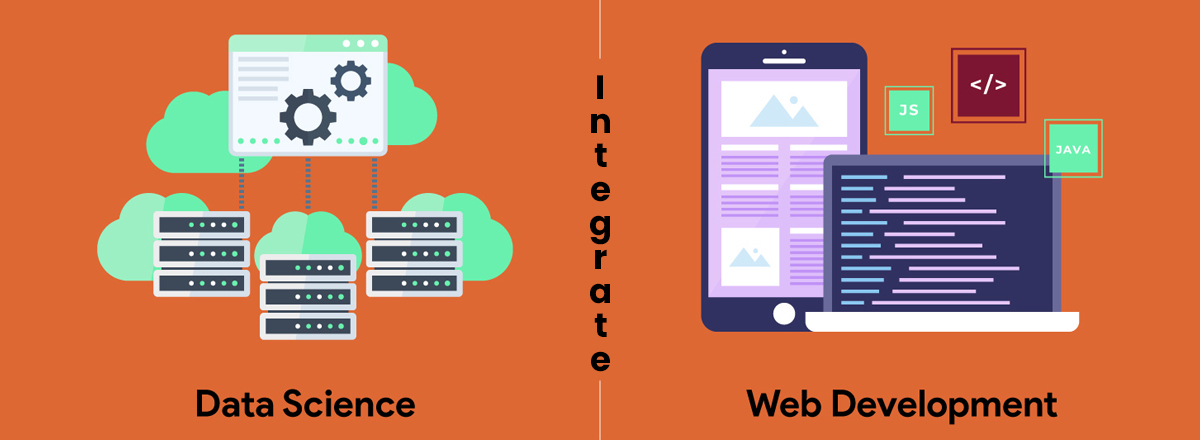Tips to Integrate Data Science in Website Development
Integrating data science into custom website development can enhance user experiences, provide valuable insights, and improve the efficiency of your online platform. Below are the steps to effectively integrate data science into affordable website development service help.
Define Objectives
Clearly define the objectives for integrating data science into your unique website development process. Determine what specific goals you want to achieve, whether it's user personalization, data analytics, predictive modelling, or something else.
Collect Data
Start by collecting relevant data. This may include user interactions, website traffic, user profiles, and any other data sources that can provide insights into user behaviour and preferences. You can avail of cheap website development deals to implement tracking tools like Google Analytics or custom data collection mechanisms.
Data Storage and Management
Set up a robust data storage and management system via best website development. Depending on the volume and type of data, you may use databases, data lakes, or cloud-based solutions to store and manage data securely.
Data Processing
Data processing is a critical step. Clean, preprocess, and transform the data to make it suitable for analysis. Tools and programming languages like Python, R, and SQL are commonly used to buy website development services for data processing.
Implement Machine Learning Models
Depending on your objectives, develop and implement machine learning models that can analyze the collected data. For example, you can use recommendation systems to personalize user experiences, sentiment analysis for user feedback, or predictive modelling for forecasting.
API Integration
To make data science features accessible to your website, integrate APIs (Application Programming Interfaces). For instance, you can use APIs for natural language processing, image recognition, or data analysis services like Google Cloud, Amazon Web Services, or Microsoft Azure.
User Personalization
Utilize data science to create personalized user experiences in your website development online. For instance, recommend products, articles, or content tailored to each user based on their historical interactions and preferences.

A/B Testing
Implement A/B testing to assess the impact of data science-driven changes on your website. Compare user responses to different versions of your website to optimize design and content.
Data Visualization
Visualize data and insights to make them more understandable for users and stakeholders. Data visualization tools and libraries like D3.js, Matplotlib, or Tableau can help create interactive and informative data visualizations.
Data Security and Compliance
Ensure that you comply with data privacy regulations and protect user data. Implement encryption, access controls, and data anonymization where necessary.
Regular Monitoring and Maintenance
Continuously monitor the performance of data science models and algorithms. Update and fine-tune models as user behaviour and patterns change. Maintain data quality and accuracy.
User Education
If your website includes data-driven features that users can interact with (e.g., personalized recommendations), provide user education and transparency about how data is used and the benefits it brings.
Feedback Loop
Establish a feedback loop to collect user feedback and iterate on your data science-driven features. Users' feedback can provide valuable insights for further improvement.
Data Science Team Collaboration
Collaborate with data scientists, machine learning engineers, and data analysts to ensure the seamless integration of data science into your website development process.
Integrating data science into website development can lead to data-driven decision-making, enhanced user experiences, and improved website performance. Whether you're building an e-commerce site, a content platform, or any other type of website, data science can help you better understand your users, predict trends, and optimize your website for success.
Related Blogs
- Web Design Accessibility: Ensuring Inclusivity for All Users
- How to Create a WordPress Website?
- How to Use Google Analytics for Digital Marketing?
- How to Deal with Platform Compatibility Challenges in the Website Design Process
- Process of Metaverse Website Development?
- Tips to Integrate Data Science in Website Development
- Importance of URL in a Website Design
- How to Include Cultural Sensitivity in Website Design
- Tips for Keeping Backups in Website Development
- Remarketing Advertising Trends in 2024
- Four Pillars of Website Development and Tricks to Apply It
- Importance of Scriptwriting in Social Media Digital Marketing
- How to Create Graphic Design for a Packaging Material of a Brand
- How to Conduct SERP Analytics and Tracking in Digital Marketing
- How to Differentiate a Logo Designed for Video Game?
- Tips to Develop Angular JS Website Development
- Integration of Scroll-triggered Animations in Website Design
- Describe What Is Microsoft SharePoint and Its Importance for Website Development
- Tips to Download Resources (Webpage, Files, Videos) From A Website
- Suggest Importance of Bootstrap Process in Website Development
- How to Implement Web Design in Semplice Site Builder?
- Guide How to Design Content for Digital Marketing Newsletter



